
Politics
12:41, 27-May-2018
One month on: Who is doing more to implement Panmunjom Declaration?
By Duan Fengyuan, Ran Boqiang, Xu Xiaotong
03:41
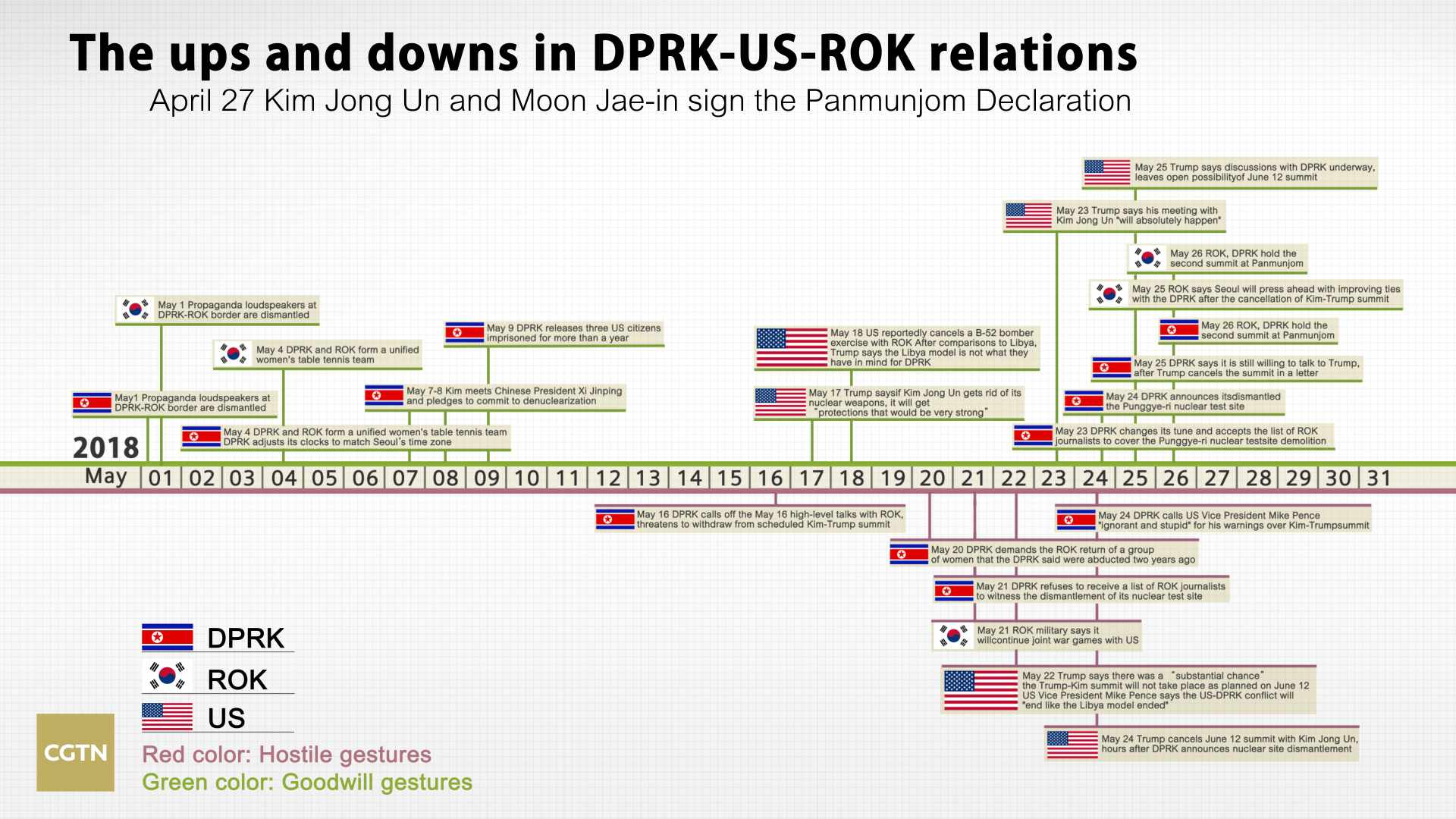
Two encouraging presents offered by the leaders of the Democratic People's Republic of Korea (DPRK), the Republic of Korea (ROK) and the US on Sunday have made the one month commemoration day of the April 27 historical summit more meaningful and remarkable.
The leaders of the ROK and the DPRK have agreed to hold high-level talks on June 1.
US President Donald Trump said he is looking at June 12 as the date for his summit with Kim Jong Un, the DPRK's top leader.
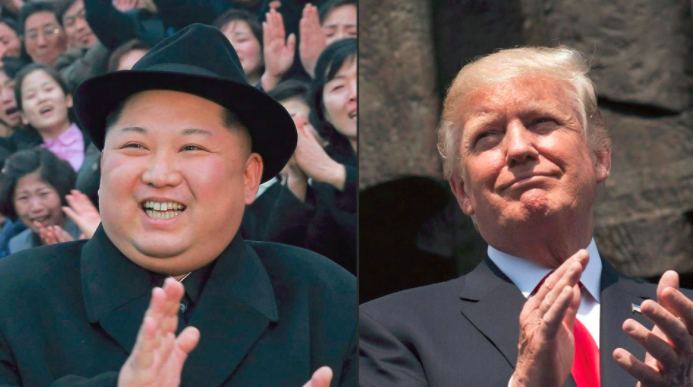
CGTN Photo
CGTN Photo
A day before the one month commemoration day of the historical summit between the ROK and the DPRK on April 27, as well as the announcement of the Panmunjom Declaration, the news that the leaders held a second summit at Panmunjom on Saturday afternoon surprised the world in the wake of US President Donald Trump's cancellation of the June 12 summit on Thursday.
How has the Panmunjom Declaration been implemented during the past month with the ups and downs in relations between the ROK, the DPRK and the US? Here is a look back to see who is the best player in this eye-catching political game.
The Panmunjom Declaration's to-do list
The Panmunjom Declaration signed by the ROK and the DPRK is just about 1,000 words, focusing on three priorities: End the Korean War; create a permanent and solid peace treaty and a nuclear-free Korean Peninsula. Here are nine critical tips of this historical declaration.
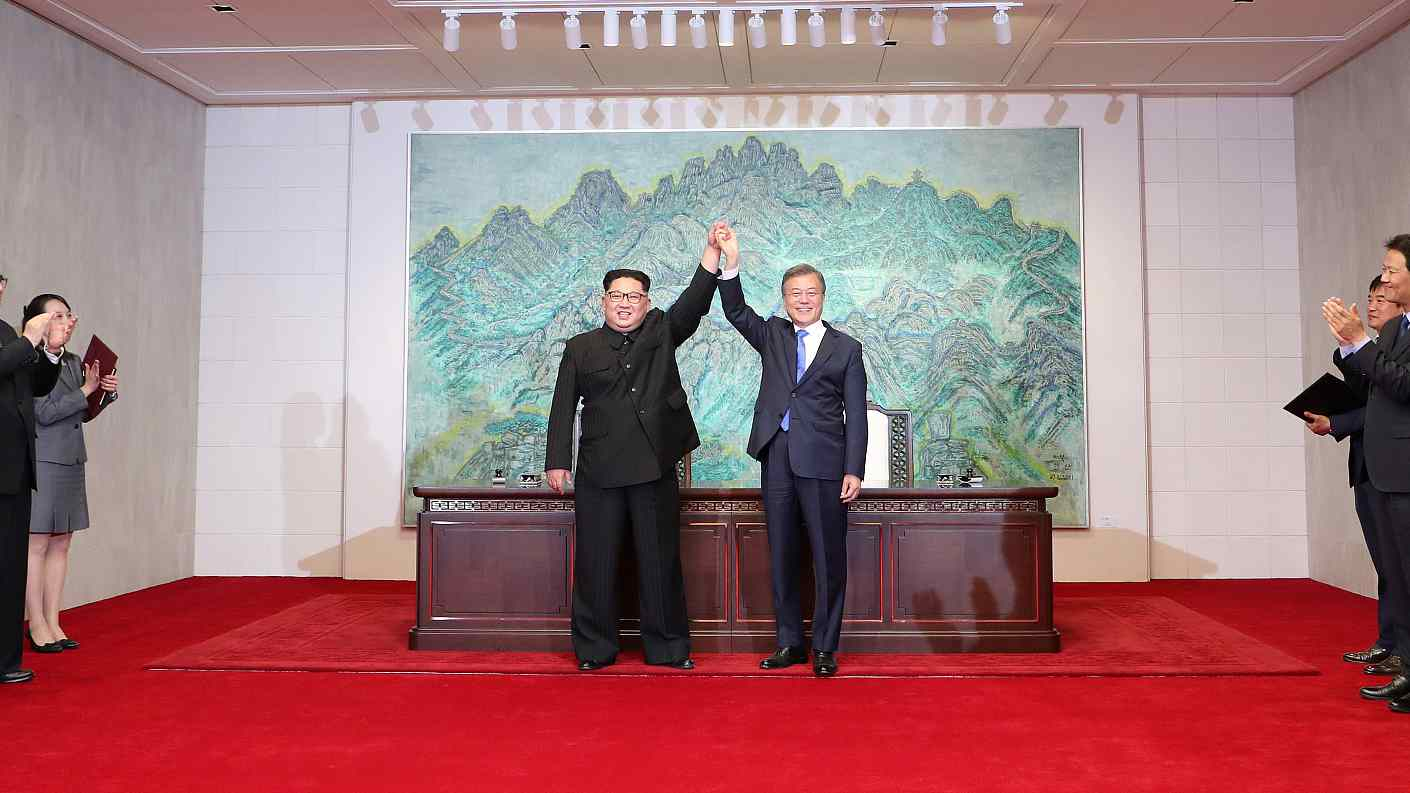
The president of the Republic of Korea (ROK) Moon Jae-in and the leader of the Democratic People's Republic of Korea (DPRK) Kim Jong Un signed the "Panmunjom Declaration" on April 27 and vowed to put an end to the Korean War. /VCG Photo
The president of the Republic of Korea (ROK) Moon Jae-in and the leader of the Democratic People's Republic of Korea (DPRK) Kim Jong Un signed the "Panmunjom Declaration" on April 27 and vowed to put an end to the Korean War. /VCG Photo
1. Cease all hostile acts on land, air and sea.
2. Bring an end to the current unnatural state of armistice and establish a robust peace regime on the Korean Peninsula.
3. Transform the demilitarized zone (DMZ) into a genuine peace zone by ceasing, as of May 1 this year, all hostile acts and eliminating their means
4. Hold dialogue and negotiations in various fields, including at high level
5. Confirm the common goal of realizing, through complete denuclearization, a nuclear-free Korean Peninsula
6. Pursue trilateral meetings involving the DPRK, the ROK and the United States, or quadrilateral meetings involving the DPRK, the ROK, the United States and China.
7. Hold frequent and candid discussions through regular meetings and direct telephone conversations.
8. President Moon Jae-in agreed to visit Pyongyang this fall.
9. Proceed with reunion programs for the separated families on the occasion of the National Liberation Day of August 15 this year.
Many view the declaration as vague and brittle with no concrete details such as time limits or sanctions detailed in it. The word "completely denuclearized" has many implications.
The infographic below helps show how the three major countries have behaved since April 27.
(Turn your phone to landscape mode for better viewing.)
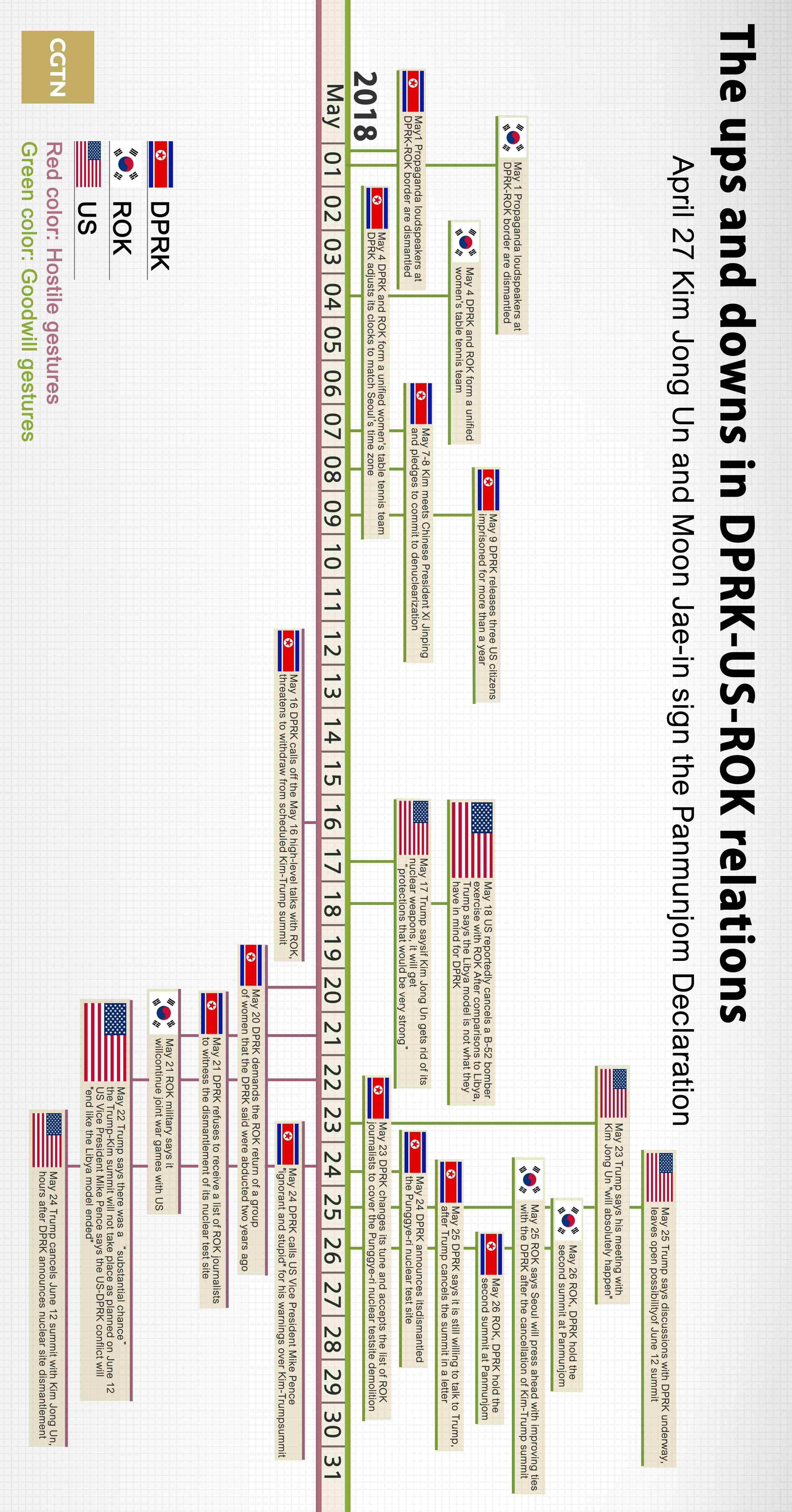
CGTN Photo
CGTN Photo
As the infographic shows, the ROK and the DPRK made more efforts towards goodwill gestures during the earlier period of May, then the situation got increasingly tense as June 12 approached.
The cancellation of the summit revealed the strategic incoherence, chaos and ill-informed process of President Trump and his team. In March, Trump accepted the US-DPRK summit without a full discussion with his team.
The premise for the DPRK’s denuclearization was quite well-established when Kim Jong Un and Moon Jae-in made a historical handshake on April 27 at Panmunjom.
The game will go on…
More ROK-DPRK high-level talks?
"Our government will do its part in carrying out the Panmunjom Declaration," Unification Minister Cho Myoung-gyon told Yonhap reporters on Friday.
00:45
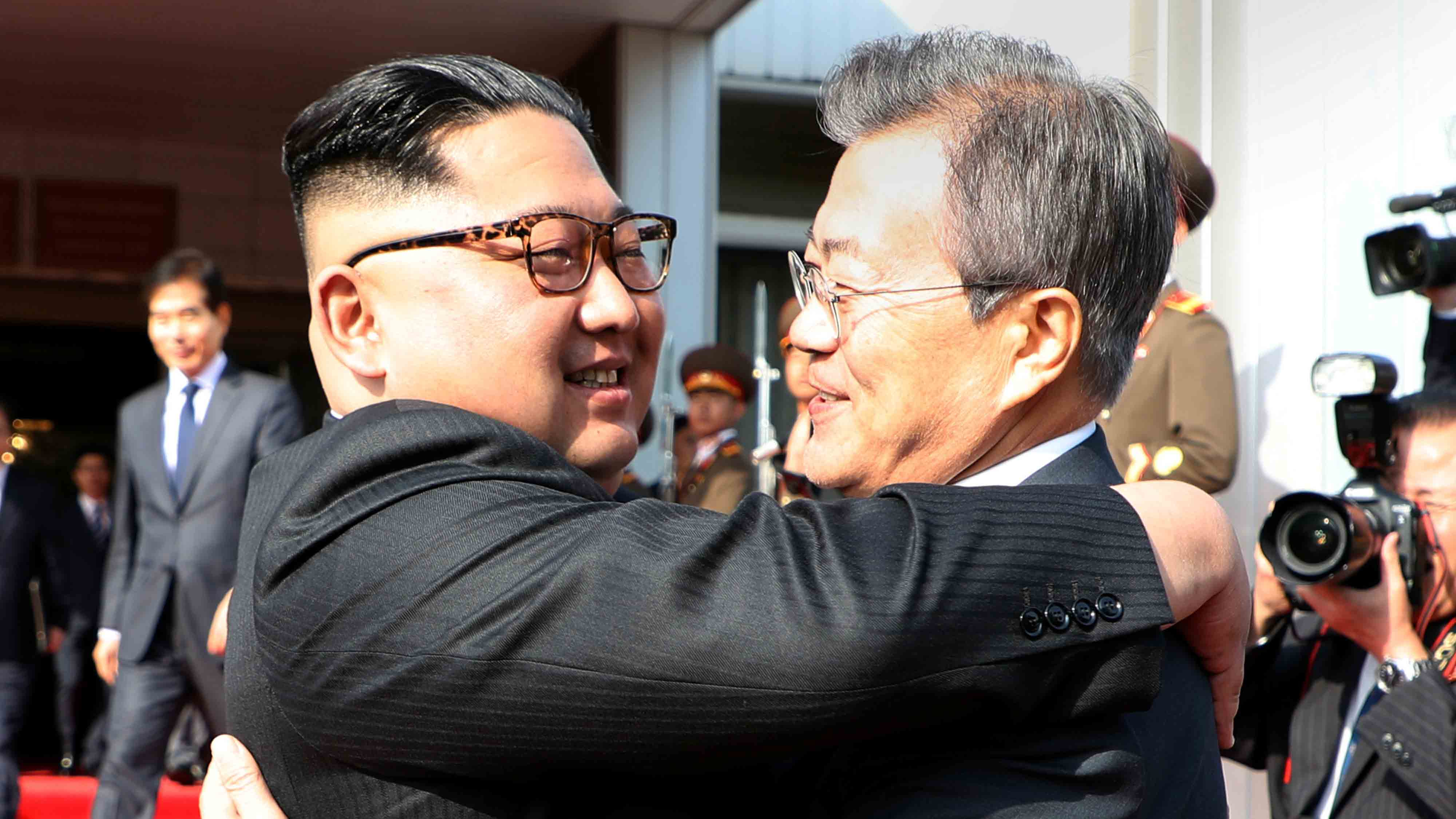
"There is no comment yet on whether or not the ROK will advance the high-level talks between the ROK and the DPRK. It will conduct comprehensive discussions based on basic conditions," he added.
Then a day later, the two leaders held a second summit at Panmunjom.
Trump-Kim summit resuming?
The DPRK on Friday said it was still willing to talk to the United States after President Donald Trump cancelled a summit between the two countries, a decision Pyongyang described as "extremely regrettable."
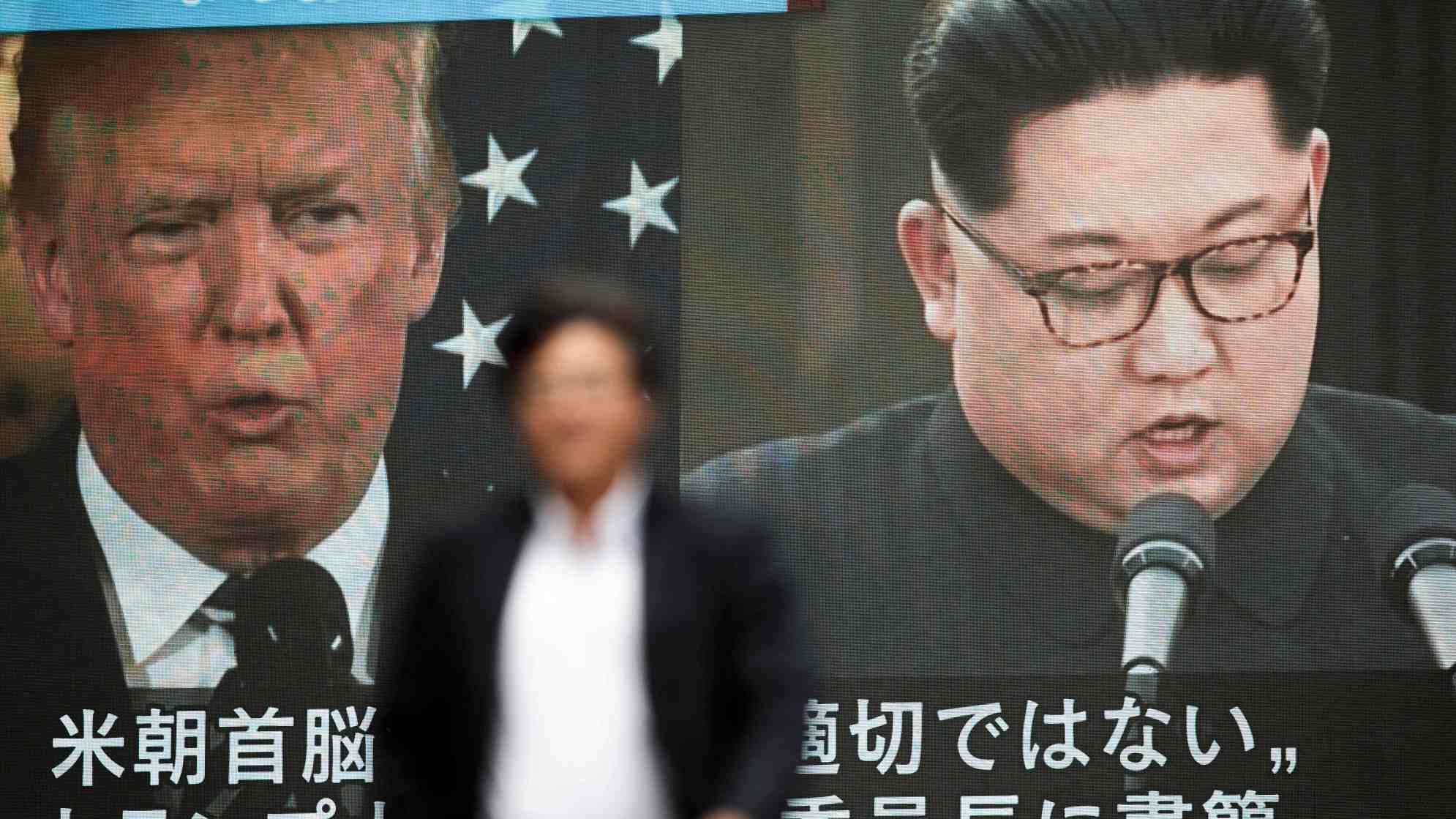
VCG Photo
VCG Photo
Trump said in the cancellation letter to Kim on Thursday that "If you change your mind having to do with this most important summit, please do not hesitate to call me or write."
A White House team will leave as scheduled for Singapore this weekend to prepare for a possible June 12 summit, a spokesperson said on Saturday.
A ROK-DPRK-US (plus China) summit?
China and the ROK are two important and indispensable countries that are influential in the relations between the DPRK and the US, often serving as a buffer, modifier or a catalyst.
Moon also says he hopes to hold a three-way meeting after the successful Trump-Kim summit to formally end the Korean War on Sunday.
Worse conflict?
The Wall Street Journal quoted sources on May 25 as saying that the White House is currently considering applying a dozen new sanctions to the DPRK earlier this week. The newspaper also quoted a White House official who said that the National Security Council also held a meeting on May 23 to discuss potential military actions and new sanctions.
Based on the DPRK already demolishing the Punggye-ri nuclear test site and the great differences between the two sides on the goal of denuclearization, the possibility of the conflict worsening exists.
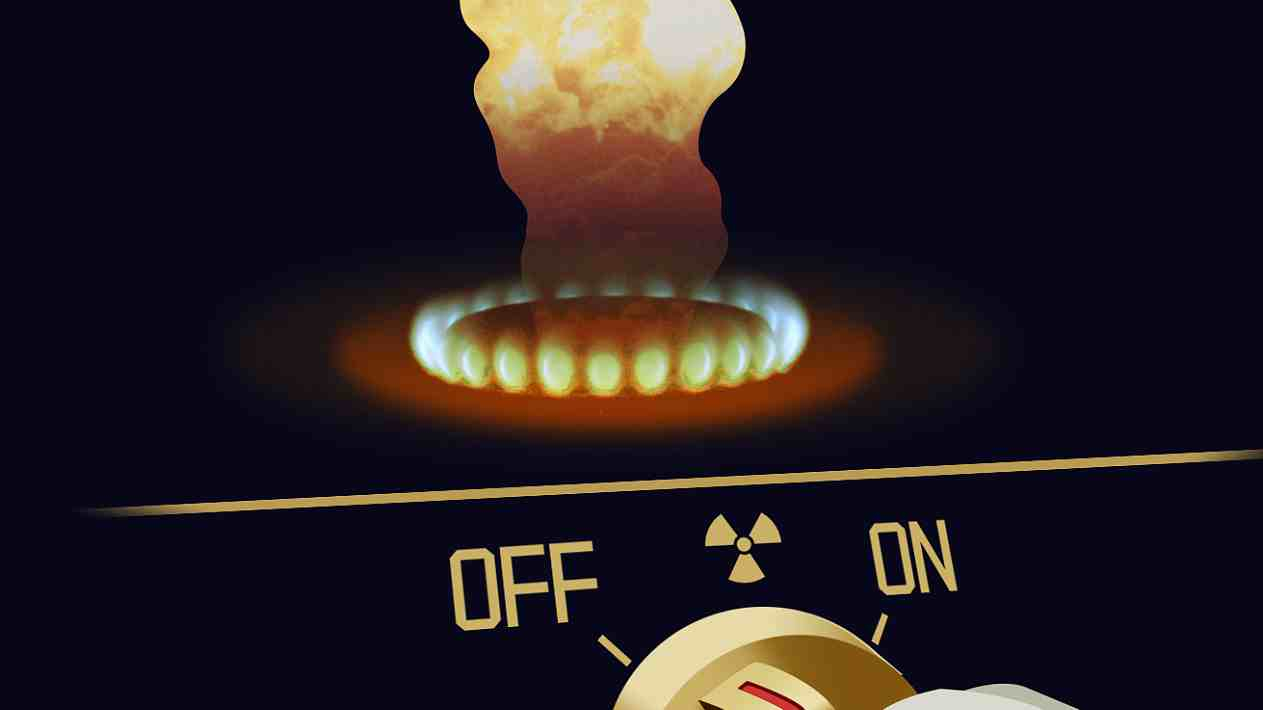
VCG Photo
VCG Photo
Read more:
Trump said on Friday, following the cancellation of his planned summit with Kim Jong Un, that a "greatly enhanced" US military stands "ready if necessary."
US' CVI (complete, verifiable, and irreversible) denuclearization is in conflict with the DPRK's simultaneous or staged gradual denuclearization.

SITEMAP
Copyright © 2018 CGTN. Beijing ICP prepared NO.16065310-3
Copyright © 2018 CGTN. Beijing ICP prepared NO.16065310-3